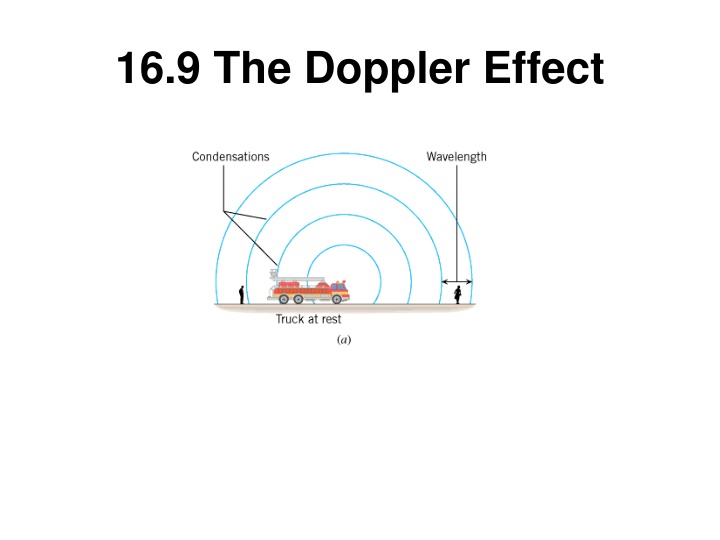
The Doppler Effect in Physics
Explore the Doppler Effect, a phenomenon where the frequency or pitch of a wave changes for an observer moving relative to its source. Learn about how the effect occurs when the source moves towards or away from the observer, and the equations used in different scenarios. Dive into the general case of the Doppler Effect and understand the role of observer and source velocities.
Download Presentation

Please find below an Image/Link to download the presentation.
The content on the website is provided AS IS for your information and personal use only. It may not be sold, licensed, or shared on other websites without obtaining consent from the author. If you encounter any issues during the download, it is possible that the publisher has removed the file from their server.
You are allowed to download the files provided on this website for personal or commercial use, subject to the condition that they are used lawfully. All files are the property of their respective owners.
The content on the website is provided AS IS for your information and personal use only. It may not be sold, licensed, or shared on other websites without obtaining consent from the author.
E N D
Presentation Transcript
16.9 The Doppler Effect The Doppler effect is the change in frequency or pitch of a wave for an observer moving relative to its source.
Source Moving Towards Observer v . = f f o s v v s
Source Moving v . = f f o s v v s vs .when the source moves towards the observer. +vs . when the source moves away from the observer.
Moving Observer + v v = . o f f o s v
Moving Observer v v = . o f f o s v In the above equation +vo is used when the observer moves towards the source and vo is used when the observer moves away from the source.
Doppler Effect General Case v v v . = o f f o s v s
Doppler Effect General Case v v v . = o f f o s v s +vo is used when the observer moves towards the source, vo is used when the observer moves away from the source, vs is used when the source moves towards the observer, and +vs is used when the source moves away from the observer.
Application of Doppler Effect Nexrad: Next Generation Weather Radar
16.10 Applications of Sound in Medicine 1. Ultrasonic Scanner 2. The cavitron ultrasonic surgical aspirator (CUSA) 3. Bloodless surgery: High-intensity focused ultrasound (HIFU) 4. The Doppler flow meter
The cavitron ultrasonic surgical aspirator (CUSA) Neurosurgeons use a cavitron ultrasonic surgical aspirator (CUSA) to cut out brain tumors without adversely affecting the surrounding healthy tissue.
Bloodless surgery High-intensity focused ultrasound (HIFU) Another application of ultrasound is in a new type of bloodless surgery, which can eliminate abnormal cells, such as those in benign hyperplasia of the prostate gland. This technique is known as HIFU (high-intensity focused ultrasound). It is analogous to focusing the sun s electromagnetic waves by using a magnifying glass and producing a small region where the energy carried by the waves can cause localized heating. Ultrasonic waves can be used in a similar fashion. The waves enter directly through the skin and come into focus inside the body over a region that is sufficiently well defined to be surgically useful. Within this region the energy of the waves causes localized heating, leading to a temperature of about 56 C (normal body temperature is 37 C), which is sufficient to kill abnormal cells. The killed cells are eventually removed by the body s natural processes.
Doppler Flow Meter A Doppler flow meter measures the speed of red blood cells.
